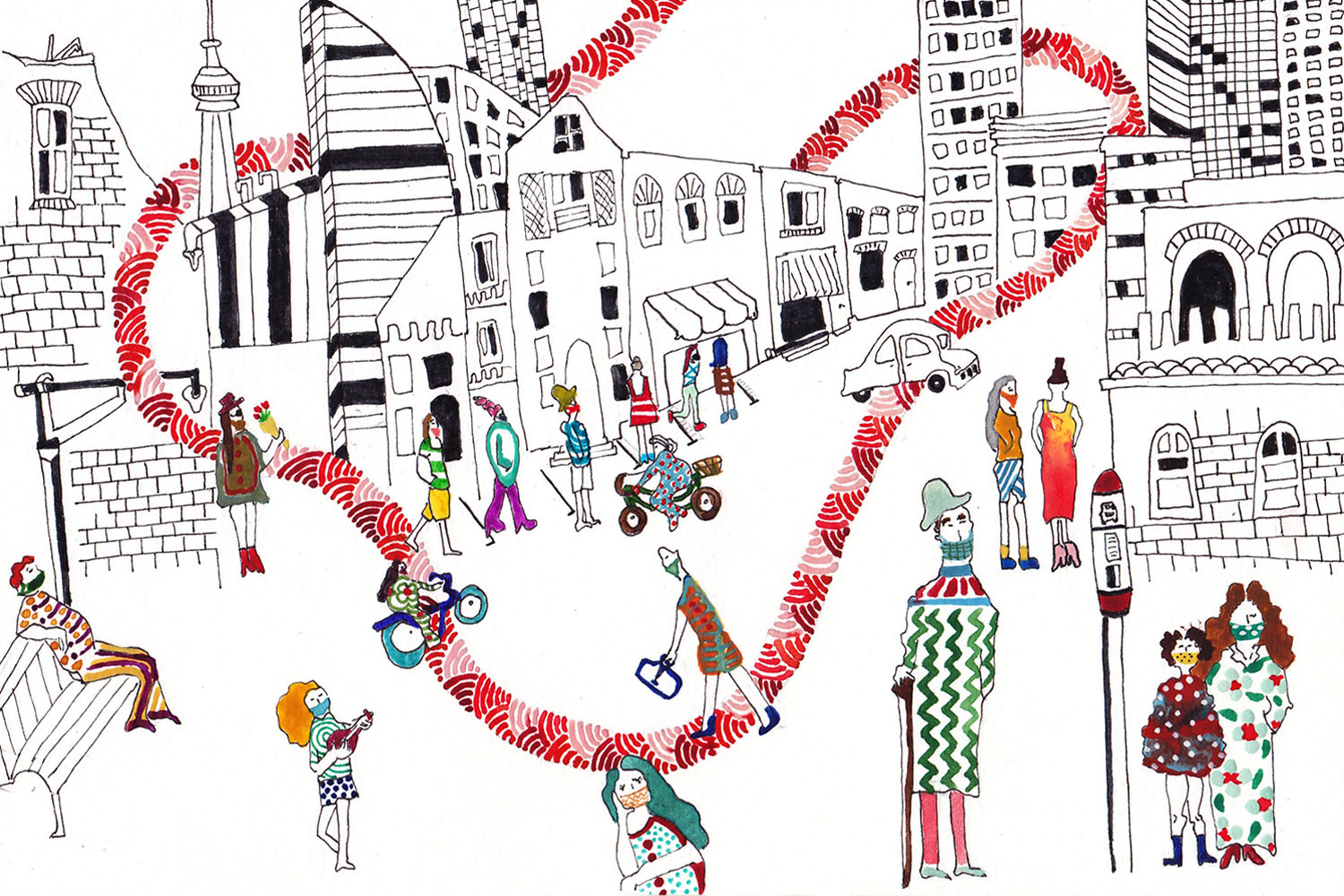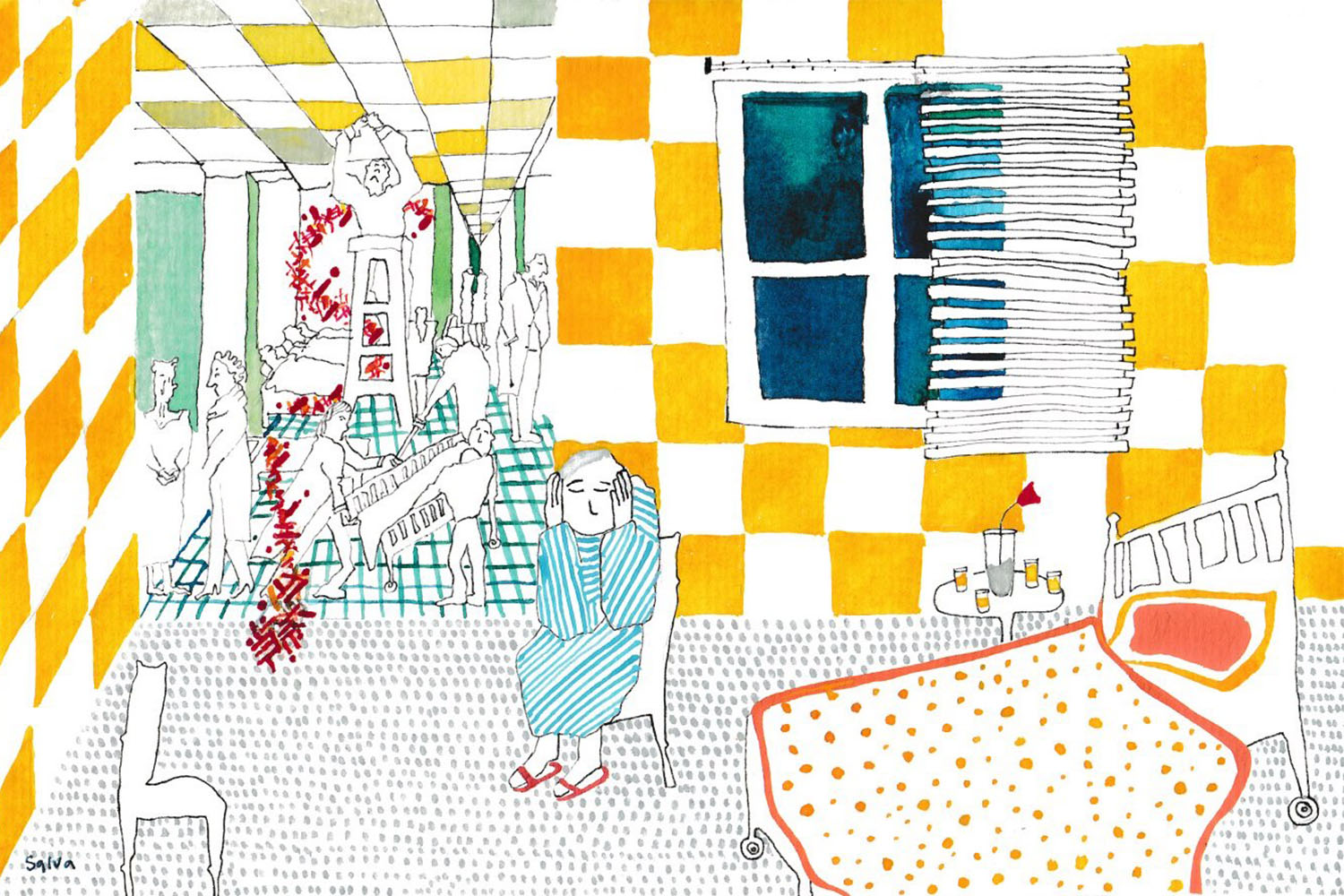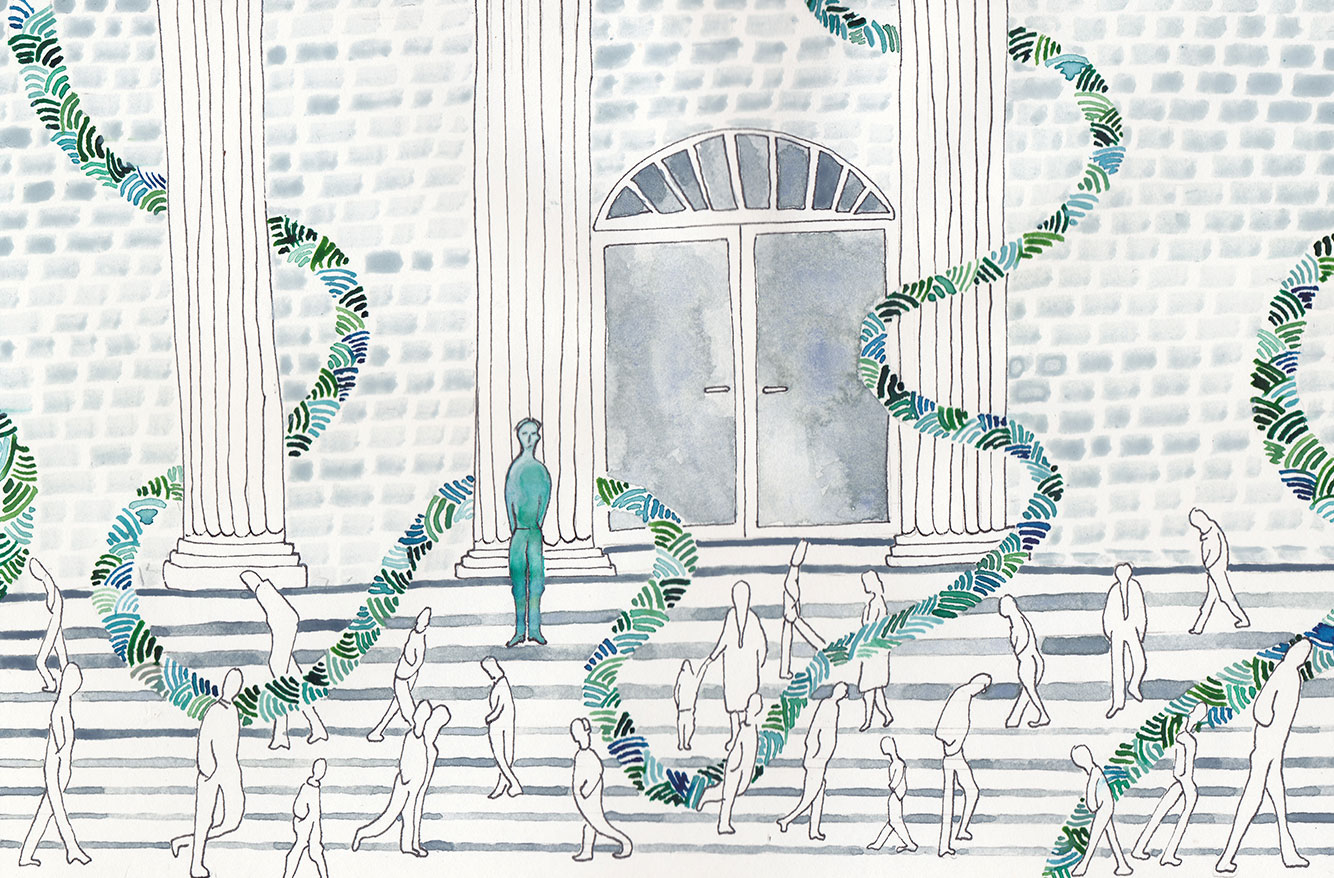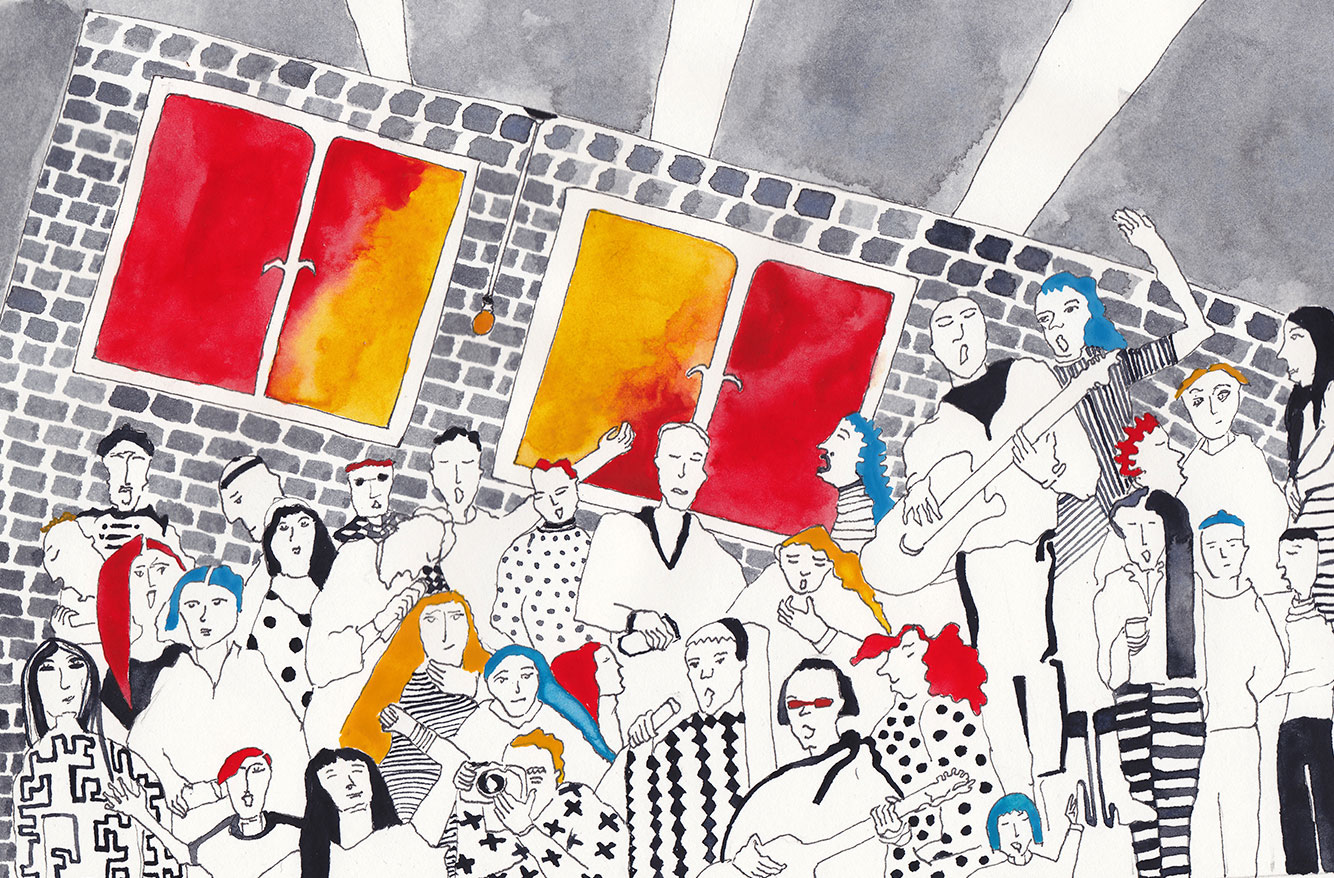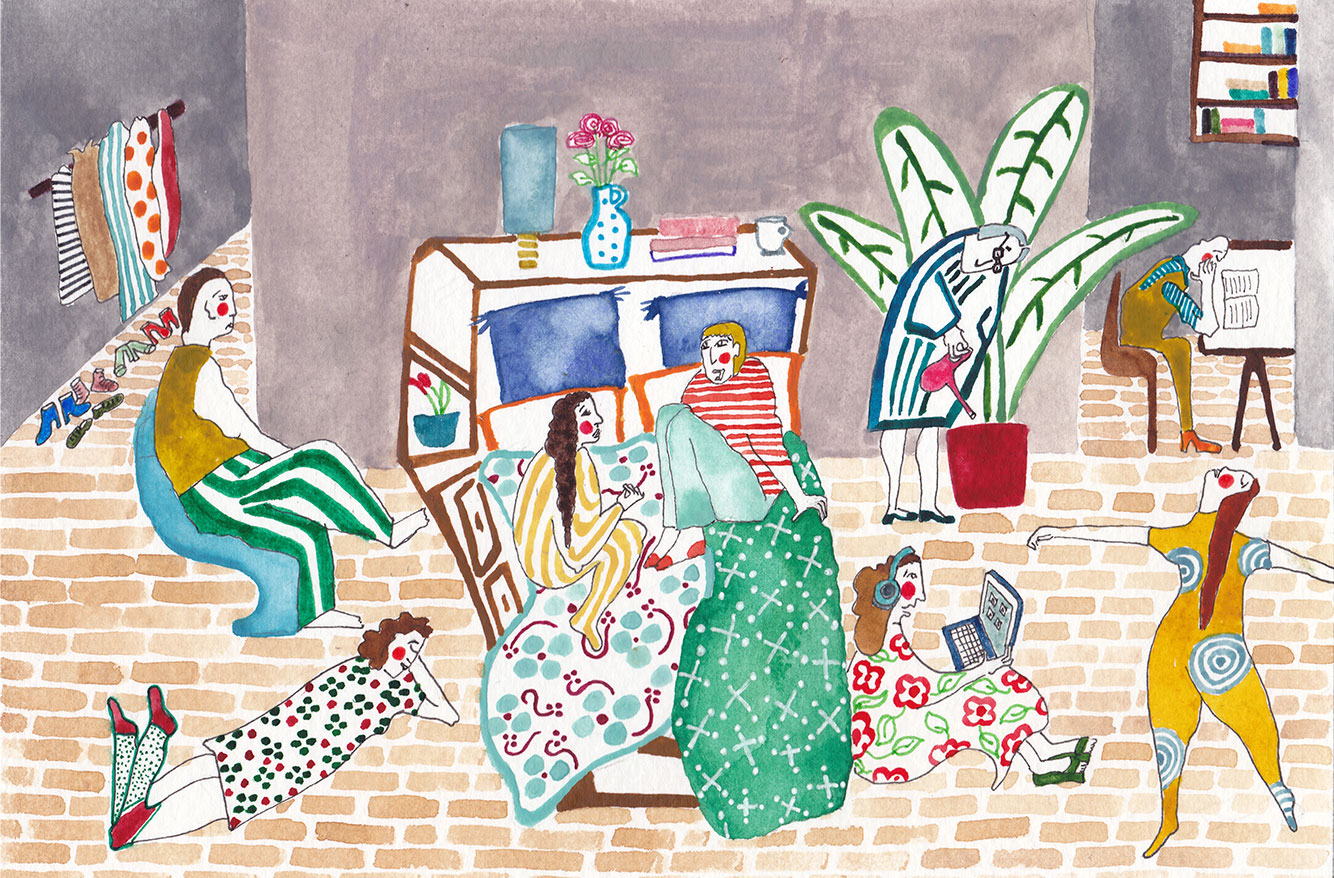
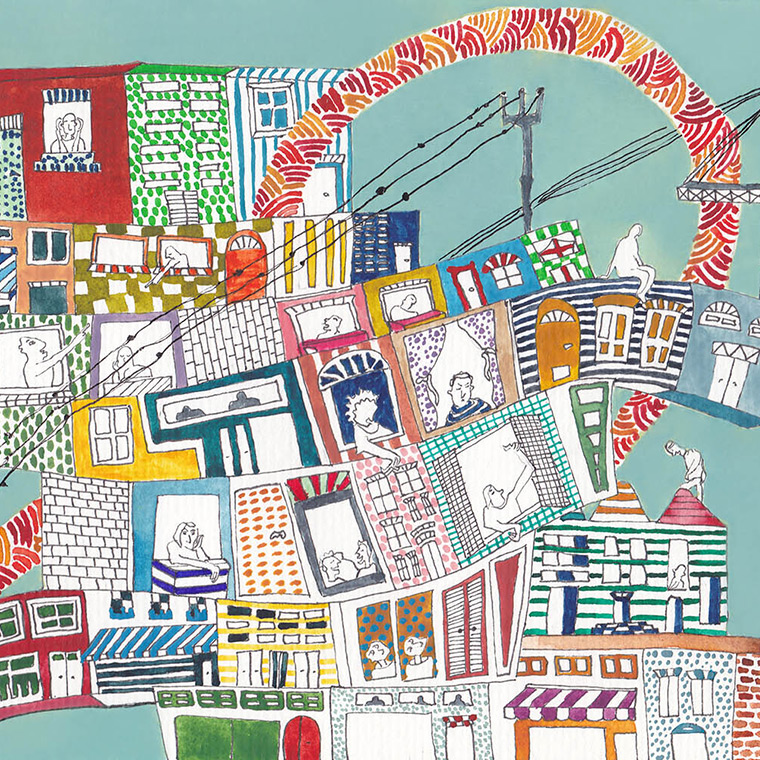
For much of the summer, when I sat down to write, I was serenaded by a chorus of circular saws, lawn mowers, and wood chippers. Some days, a mysterious banging from a nearby neighbour joined in. If you’ve been fortunate enough to have spent the pandemic mostly working from home, you’ve probably become very well acquainted with the sounds around your home, too. Not all of them have been pleasant! But if you listened closely, ventured out into the streets, you might have also heard something else—or rather, a surprising lack of else. The birds seemed louder. Voices carried farther. Construction had paused (for some). The sudden shift was palpable. With fewer cars on the road, noise measurements in cities across Europe dropped significantly. Seismologists could actually see our behaviour shift, the usual vibrations of human activity now dulled. Microphones in cities around the world captured “human-made environments suddenly stripped of human sounds.” Our cities, once loud, had suddenly been silenced. It was tempting to wonder: what if life were this quiet all the time?
It’s a loaded question with a long history. The desire for quiet—quiet for whom?—is inextricably linked with issues of race, class, power, and control. Yet noise is too often thought of as a personal problem, and not a collective or equitable concern. Of the many good reasons to shift our thinking, Tor Oiamo has been studying the long-term health effects of background or environmental noise—the kind of noise that could never justify a complaint to the city, the kind you probably never noticed until it was gone. “What comes to people’s minds most of the time when they think about noise are things like your neighbour doing construction, or the dog, or concert events—these things that basically stand out from background noise levels,” said Oiamo, an assistant professor at Ryerson University. As annoying as these daily intrusions may be, they don’t pose as much of an impact on our health as the chronic, long-term nuisances we’ve learned to cope with or ignore—namely, the constant thrum of transportation and industry that ripples outwards day after day, year after year.
Aside from the obvious impacts on sleep, annoyance, and quality of life, the World Health Organization has also deemed excessive environmental noise to be detrimental to cognitive, cardiovascular, and mental health. Worse, the people who suffer the most tend to be among our cities’ most marginalized and disadvantaged, while quiet is for those with privilege and money. So while what we hear in the foreground certainly matters, there’s mounting evidence that what we don’t hear in the background deserves our attention too. All it took was a global pandemic for us to hear the problem.
Noise went from something to be planned and built for—something that cost money to manage—to a moral failing to be policed, licensed, and controlled.
By historical accounts, the soundscape of Toronto in the early 20th century was a cacophonous din: trucks rumbling, newsboys shouting, streetcars screeching, garbage tins rattling, milk bottles clattering, children screaming, radios blaring, factories whistling, bells clanging, dogs barking, and, most hated of all, the wanton honking of car horns at all hours of the day and night (termed “nocturnal tooting,” by The Globe and Mail). By the 1930s, the anti-noise movement was in full swing. Organized campaigns decried “needless noise” and urged order be brought to the city. Noise was deemed unneighbourly, and something that could be fixed through education—or, as a member of city council suggested, propaganda. G.R. Anderson, the University of Toronto’s self-styled “Noise Professor,” was a fixture in the press, using his newfangled sound meter to rank the city’s worst offenders (number one: streetcars). Adelaide Plumptre, only the third woman to serve on city council, proposed a bylaw against “unnecessary noise,” and on June 26, 1939, it came into effect. Shouting, honking, and bell ringing were outlawed. Old cars and motorcycles had to run quietly. Gramophones had to be played with soft needles, and radios turned down low. People could be fined up to $50 for each offence.
Toronto’s anti-noise efforts didn’t happen in a vacuum, but instead took explicit cues from what was happening south of the border in New York. New York City Mayor Fiorello LaGuardia waged his own “war on noise” and in 1936 the city passed one of the first comprehensive noise bylaws in North America. LaGuardia, wrote University of Toronto assistant professor Lilian Radovac, “approached noise as an aural barometer of the chaos of New York City,” both a symptom and cause of urban disorder. He “brought sound to the forefront of a wide-ranging campaign to rehabilitate, reorganize, and transform urban life.” Noise went from something to be planned and built for—something that cost money to manage—to a moral failing to be policed, licensed, and controlled. It was a shift “from preventative to punitive,” Radovac wrote.
In reality, noise complaints in New York were used as a pretext to hassle the Black and immigrant residents of gentrifying neighbourhoods, to disrupt political protests and strikes, to get merchants off the sidewalks and children out of the streets, to maintain the status quo. In Toronto, the city’s police chief D.C. Draper sought authority to deny vehicles with loudspeakers permission to participate in parades—“believed to be directly aimed at parades and demonstrations sponsored by radical groups,” The Globe and Mail reported at the time. And noise bylaws are still wielded against marginalized groups today. Radovac points to the cancellation of Carnival Kingdom, a Caribbean culture and music festival held in Vaughan in 2018, after the city received complaints of excessive noise. “Why? Is it because they’re Black? Is it because these sounds aren’t perceived to have value, or a wider community value, like the Air Show?” said Radovac in an interview earlier this year. “When you look at what gets shut down, what doesn’t, who gets targeted, who doesn’t, you start to see patterns emerge pretty clearly.”
But while noise has long been a proxy for other concerns, there is something that early anti-noise campaigners got right. Even then they suspected noise was harmful to human health, though it would be decades before rigorous scientific evidence proved those suspicions right.
With the 1960s came the promise of supersonic flight. Oklahoma City had aspirations of becoming America’s first supersonic hub. The problem was, no one quite knew how its residents would deal with the sonic booms. “How would regular American citizens react to spontaneous explosions concussing their cities many times a day?” wrote Sam Anderson in Boom Town. “What would happen when houses shook, pets ran off, children woke up screaming from naps? Would everyone eventually adapt, or would the country be driven slowly insane?” The answer was Operation Bongo, a U.S. government campaign to subject the residents of Oklahoma City with multiple sonic booms each day, varying in intensity, to see how they would fare. Oklahomans were bombarded with 1,253 sonic booms over a period of six months. As you might expect, they were anxious, frustrated, and very, very annoyed.
Much as cars had remade the soundscape of the streets, air travel had by this point remade the soundscape of the sky. Before long, noise was held up as an environmental scourge on par with water and air pollution, and became a full-blown public health issue in the 1990s. A growing number of epidemiological and psychological studies suggested links between excessive noise exposure and chronic adverse health effects, from heightened blood pressure to cognitive impacts on memory, performance, and concentration.
At Ryerson, Oiamo and his colleagues published the first comprehensive study of environmental noise with the city’s public health department in 2017. “The number of people exposed to harmful levels is most definitely increasing,” Oiamo said. Unsurprisingly, the study found road, rail, and air traffic contributed nearly 60 percent of background noise, and those living near major roads, highways, and mixed commercial areas were especially vulnerable to excessive levels. Over 60 percent of Toronto residents experienced traffic noise levels above those recommended by the World Health Organization during daytime hours. 40 percent still experience above-recommended levels at night. Over a 24-hour period, the overall average noise levels for Toronto were 63 dBA—about as loud as a normal conversation, but one that never ends.
Worse, lower income areas were almost 11 times more likely to have half their residents exposed to excessive nighttime noise than residents in higher income areas. Put another way, a quiet life is a privileged life, available to those who can afford a well-insulated unit, a detached suburban home on a residential street, or an apartment that’s many stories high, nowhere near the street at all. Given what we now know about the health effects of noise, you would think we would be more concerned. “We’re seeing long-term effects on hypertension, diabetes, cardiovascular disease,” Oiamo said—effects that can be even worse for people in lower income or marginalized communities, who often have more limited access to health care, are more likely to be stressed, and in general have lower life expectancy. “So when you add these types of environmental risk exposures on top of those social and individual vulnerabilities, then it accentuates the problem. It makes the risk even higher for noise.” Why, then, don’t we treat environmental noise the way we do other sonic intrusions in our lives?
A quiet life is a privileged life, available to those who can afford a well-insulated unit, a detached suburban home on a residential street, or an apartment that’s many stories high.
Before the pandemic, Toronto’s two most frequent noise complaints were for construction and amplified sound. It’s not hard to see why. They’re the types of intrusions you can’t help but notice, the exceptions to the norm. “When you’re in your apartment, and your neighbour is blasting music, you can pinpoint who it is, who it’s coming from, and why you hate it,” said Radovac.
The city has 24 dedicated bylaw officers who respond to noise complaints from 6:00 a.m. to 2:00 a.m. the next day, every day. The team was created last October, at the same time Toronto’s new noise bylaw came into effect. Whereas before, the audibility of unwanted sound was measured subjectively, the new bylaw introduced specific limits for various types of sound. Now, officers use sensitive, objective measuring devices to ensure compliance with newly-set decibel limits for unwanted noise. In late-February, I watched two members of the noise team train their listening device on a nuisance car wash in the city’s west end. But background noise is more pernicious. It’s always there—and there’s nothing you can do about it, no way to confront it, not by yourself. You can’t take it to 311. In fact, the city’s bylaw officers are trained to filter out background noise from distant highways and industrial work in their readings when investigating a noise complaint.
As a society, there are different levers we need to pull. Last fall, the city’s Board of Health released a Noise Action Plan “aimed at reducing exposure to ambient environmental noise over time.” It recommended public transit agencies prioritize noise mitigation in their planning, and adopt more electric vehicles. Speed limits could be reduced, freight trucks re-routed, and roads kept in better repair. Amendments to the provincial building code have also been proposed—something that Radovac said would go a long way to separate people from harmful levels. When noise mitigation requirements are weak or nonexistent, there’s little incentive to proactively build them in for developers who only care about the bottom line.
For Oiamo, “if there was one single thing I’d suggest, it would be to enforce and reduce speed limits.” He said it’s a simple move with big potential upsides: expose fewer people to harmful levels of noise, and reduce fatalities at the same time. According to the city, a vehicle travelling at 50 km/h makes twice as much noise as a vehicle travelling at 30 km/h. “There are things we can do to separate people from the noise and not radically alter the way our city works,” Oiamo said. “That’s what makes me optimistic that we’ll be able to address this.”
As the pandemic unravels, radical changes may be tempting. But the quiet of the pandemic shouldn’t be aspirational, especially when we know the cause. Nor should we be so quick to reconfigure the workings of urban life without considering who changes are really for. As Black and Brown urbanists have observed, transportation reform should be rooted in equity rather than pandemic opportunism,” wrote Kate Wagner for The Atlantic. The goal shouldn’t be to make the city quieter—as if noise is inherently bad—but to reduce the number of people, and types of communities, exposed to harmful levels of sound. Doing so won’t be easy; it will require us to confront multiple interconnected inequities at once. The city’s Black residents and residents of colour—who overwhelmingly make up our most marginalized communities in a city divided by lines of race and income—are those most impacted by noise. They’re also the ones who have been most affected by the pandemic. You can’t treat one and not the other when the underlying causes are the same.
As people slip back into their old routines, noise will inevitably return. But remember, the saws, the mowers, the mysterious hammering are mere temporal, neighbourly nuisances. The real threats are harder to hear, because they’re always there—a part of the soundscape itself.
Correction—November 18 2020: This article was edited to correct the attribution of ’nocturnal tooting’ from the Toronto Star to the Globe and Mail. It also corrects the spelling of the University of Toronto Professor G.R. Anderson’s name.

